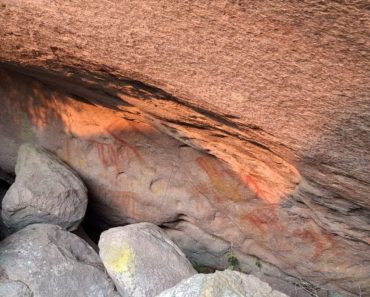The Gospels tell us that once Jesus had died, shortly before sundown on Good Friday, he was taken down from the cross and buried. But not everyone agrees. New Testament scholars John Dominic Crossan and Bart Ehrman have disputed this detail and argued that Jesus was not buried at all. Their argument is rooted in Roman practice and the fact that Romans regularly denied criminals proper burials. Instead, they often left bodies on the cross as a warning to travelers. When the corpses were removed, Crossan and Ehrman argue, they were unceremoniously tossed into ditches or mass graves. The theory strikes at the heart of Christian beliefs: If Jesus was never properly buried then the subsequent stories about the empty tomb and resurrection must be a fiction.
Though Ehrman and Crossan present a compelling case, and some criminals were left to rot in full view of the public, the situation may well have been different in 1st-century Jerusalem. The historian Josephus writes that Jews were so careful about funeral rites that “even malefactors who have been sentenced to crucifixion are taken down and buried before sunset.” In the case of Jesus, who was executed at the start of Passover, Pilate may well have wanted to keep the people happy by removing the bodies before sundown.
(The High Priest behind Jesus’ rigged trial)
Searching for the empty tomb
Assuming Jesus was buried, where was he taken? The Gospels say that a follower of Jesus named Joseph of Arimathea requested Jesus’ body from Pilate and that he buried Jesus in his newly constructed family tomb. Though we cannot prove that this happened, noted archeologist and historian Jodi Magness concludes that this version of events “accord[s] well with archeological evidence and with Jewish law.” Tradition maintains that Jesus’s tomb was close to Calvary. Most scholars agree that the Church of the Holy Sepulchre has as strong a claim as any to be the place of his execution and burial.
This brings us to the biggest question of all: what is the evidence for the resurrection? According to the Bible, Jesus was resurrected three days after his death and burial. The Gospels agree that the tomb was empty and told stories of supernatural appearances by angels (Mark 16:5) and the risen Jesus himself (John 20:14). As a story, the resurrection is less unbelievable in the 1st century than in the present. Stories of dying and rising gods—like Osiris, Dionysius, and Mithras—were well known in antiquity and most people in in the ancient world believed that the dead were in contact with the living after they passed away. As Meghan Henning, a professor of New Testament and Christian Origins at the University of Dayton, told National Geographic, “Today, if someone says they spoke to their dead mother we would be concerned, but in antiquity we would have asked ‘oh really, what did she say?’”







